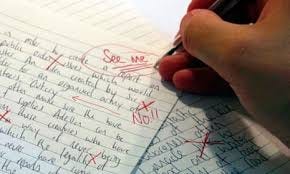In my last post I mentioned that I was reviewing the copyedits of The Windsor Affair, my new novel that will be out in June. I figured some people might like to know a bit about that process, so here goes.
I once talked to an aspiring author who told me that if he could only get an agent, he’d never doubt his writing abilities ever again. Reader, I laughed. Out loud. Because he had no idea how many times every agented and published author will be reminded, often publicly, of their every fault and weakness. And nowhere is this more evident than in the copyedit phase.
Here’s how publishing with a major publishing works: You write a book. You revise that book multiple times because nobody writes a perfect first draft. Usually your agent reads the book and weighs in—the first time someone will tell you that you’re not perfect, after all. Then your editor at the publishing house will read it and give initial thoughts—more evidence that you still have lots to learn. Then she’ll do what people today call a “developmental edit” (this is a completely new term to me; in my day we just called it an edit). This is where your editor will really tear your manuscript apart, if it needs it, and give her thoughts on how it needs to be stitched back together again. This editorial letter will explain which characters work and which ones don’t, if the POV is the right one, maybe you need an extra chapter here, delete a couple there because they don’t further the plot, etc., etc.
OK! You go back and revise the novel again with all this in mind. Then you turn it in – again!
Now you get line edits, where your editor goes through the manuscript line by line and once more points out all the mistakes you made. Sometimes you’ve made a huge mistake in continuity. (I think I had someone pregnant in California Golden for an abnormally long time, in one of my early drafts!). Sometimes you have fallen in love with a word and used it far too many times throughout the manuscript. In the line edits for The Autobiography of Mrs. Tom Thumb, my lovely editor pointed out that I had a character crying too often. Oh, and she didn’t sugarcoat it - professionals don’t, they assume you can take it – because, if I recall, her comment, in red pencil on the page because this was back in the Paleozoic era, was “OH MY GOD IF SHE CRIES ONE MORE TIME I’M GOING TO SLIT MY WRISTS!”
So you, the professional author, correct all these mistakes helpfully pointed out in the line edits.
Then you get copyedits.
You think you’ve turned in a perfect manuscript by this time, of course. I mean, haven’t you fixed everything that was wrong? Oh no. No, you have not. And your wonderful copyeditor – and truly, these are unsung heroes in publishing – has now highlighted even more mistakes for you to confront and fix.
My sons once asked me what my day was like, as an author. They were interested in the actual work, the process. I told them it was like writing a long book review or essay, every single day. (They were in high school and college so this made sense to them.) They were appalled that I’d choose to do that.
Well, copyediting is like having about 300 of these essays returned to you at once, all marked up in red pencil.
(Remember red pencils? Sigh. When I was first published copyedits were done on paper and I’d have to use colored pencils – copyedits were in red so my answers and corrections had to be in a different color. And honestly, I’m not nostalgic for that time. Because marking up the manuscript in my bad handwriting probably led to more work for the copyeditor when the manuscript was returned – by mail! Just one copy, all marked up by hand, entrusted to FedEx or the USPS to make the roundtrip journey from New York to Chicago, and God knows I sweated bullets until I got confirmation it had made it back safely. I think there’s a lot to be said for reading your work printed out on paper, as a way for the author to get a good sense of it before revising it. But I will never complain about electronic copyedits.)
So! I just turned in my reviewed, copyedited manuscript of The Windsor Affair. And while, yes, of course I got to see my stupidity up close and personal, I would say this might have been the cleanest manuscript I’ve ever turned in. I hardly had any continuity issues (which, since I write historical fiction based on facts, is usually kind of a problem since you have to get dates exactly right). And with all the various titles in this novel – Edward the Prince of Wales is called David by his family and then Prince Albert becomes King George even though he also had a brother named Prince George, and boy, this kind of thing is tough to keep track of – I pretty much kept them consistent though out.
But I’m not getting cocky and I don’t automatically think that at last! I have arrived! Because there are still reader reviews and industry reviews to come which will no doubt remind me that I still have a lot to learn.
I don’t think there’s ever a stage where a real writer thinks, “At last, I no longer have any doubts about my talent!” But that’s OK. I always think I learn something new with every book. If I thought I didn’t have anything else to learn, then – why would I keep writing?
Writing is a journey. For both the author and the reader.
And I love a good journey.




You’ve always had my utmost respect for what you do, and all that it entails. But holy moly, you’ve just “edited” yourself up several notches in my esteem. Thank you for so many wonderful hours of enjoyment and education. Really looking forward to the newest addition to your book family.
Delightful, humble, candid, informative. Thank you, Melanie. I eagerly await June, sipping tea from an Edward VIII commemorative mug.